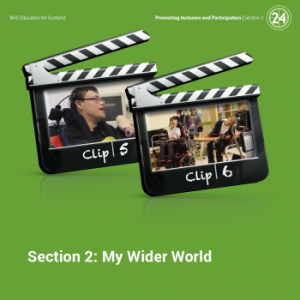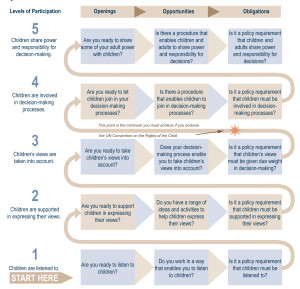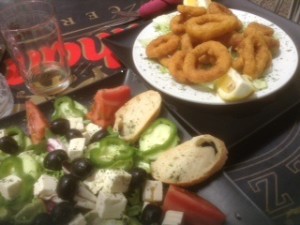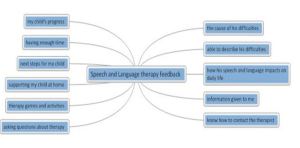Get your New Year’s resolution Talking Mat here!
Talking Mats is a social enterprise whose vision is to improve the lives of people with communication difficulties. 2015 has been another exciting year for us. We have had great opportunities to work with a fantastic range of people and hear great stories: from wee ones in nurseries using Talking Mats to encourage active participation and decision making, to older people and their families through our dementia family training project. It is our core belief that good communication is fundamental to a quality service. Making sure there is space for active listening to views and concerns particularly, if individuals have difficulties communicating is central to effective interactions and individualised, person centered care. We are really grateful to all the people who have supported the work of Talking Mats; people with communication support needs, staff who work with them and organisations that we are privileged to work with on a consultancy basis.
It will not surprise you to know that as an organisation we like to set goals and then go for them so as our thank you to you all for your continued support , we have created our very own New Year’s resolution Talking Mats;
• What are you definitely going to go for ?
• What is in the maybe pile – or that could be for those things you are already doing and will continue
• What is not a goal for you in 2016 .
• Don’t forget to use the blanks to personalize it further!
• Plus take a photo so you can reflect back on where 2016 takes you and whether you achieved your goals .
So open and download it , cut it up and we hope you enjoy using the resolution Talking Mat with friends and family ! resolution pics
We wish you all every health and happiness from all in the Talking Mats team
Fika (coffee time) in the Talking Mats office is always interesting. Recently we got chatting about Christmas preparations and who had the longest ‘to do’ list. There was a definite variation in enthusiasm for all things Christmas. We needed to do a Talking Mat! This was done on our digital Talking Mats – it’s easy to import your own images now and make a digital Talking Mat about any topic.
Eating , drinking and games and puzzles got the thumbs up! (Lois is the games queen and was the most enthusiastic about that).
Holiday, partying and entertaining got consensus.
Extended family coming to stay? This moved around a bit, but was generally positive (say no more!)
Shopping was in the mid section-we all agreed. Perhaps by now it would be less positive with last minute mayhem.
Gifts was added as a blank (how could the interviewer forget that) and not everyone was comfortable about the commercialisation of Christmas.
‘How do you feel about Juggling demands?’ We all agreed -not sure. Again remember, Talking Mats is how a person feels at a certain point in time. Ask us again on Christmas Eve?!
Christmas cleaning? All agreed was a chore and some thought best not to get too bothered about it
Talking Mats supports a group conversation. We all got our say
Merry Christmas one and all
We are grateful to Emma Atkiss, one of our accredited trainers for this interesting report.
The purpose of The Voice of the Child pilot project carried out by the Wigan Pathfinder team was to obtain pupil views using a viable tool. The team selected Talking Mats as a framework to support pupils to express their views in decisions regarding their lives. They were working on the principle that engaging with the young person and his/her family would lead to better outcomes
The project team considered that Talking Mats met the 5 criteria of Shier’s model of participation (2001)
- Children are listened to.
- Children are supported in expressing their views.
- Children’s views are taken into account.
- Children are involved in the decision-making processes.
- Children share power and responsibility for decision-making.
Click on diagram to enlarge.
The pupils in the pilot ranged from 7 to 17 years with a range of disabilities. During the pupil interviews the team found that the Talking Mats Health and Well being resource provided a practical framework for decision making and target setting
Talking mats provided :
- An objective, neutral space – a thinking tool- ‘Children and young people are able to consider their priorities when setting targets’.
- Opportunities for change – ‘Children and young people are able to make changes to their initial thoughts and have time to decide and reconsider options’.
- A truly person centred approach
- It was fun!
For example : A seven year old child with Autistic Spectrum Disorder identified both her cognitive strengths and areas for development using the Learning and Thinking domain. She provided feedback regarding her difficulty in attending when faced with too much information or choice and also her strength in planning skills. Thinking skills targets and interventions can be developed using this information as a starting point.
Their report states that the information gained from Talking Mats can be used, as part of the Education Health and Care planning and review cycle, to inform both decision-making and goal setting for children and young people i.e. It identifies strengths; It identifies areas to develop; It identifies the child / young person’s response to a range of experiences; It informs day-to-day decision-making ; It informs both targets and interventions for Individual Education Plans and it supports transition planning.
Ref : Engaging the voice of the child / young person at an individual level – Emma Atkiss,Senior Educational Psychologist and Caroline Gomez, Educational Psychologist, Wigan council
Sophie Mitchell SLT describes how she supported her students to develop their EHC Plans with the Talking Mats app .
In September 2014 our team and I were asked to facilitate the production of Education and Health Care plans for the Year 14 students at the Secondary Special School (for adolescents with complex, profound and multiple learning difficulties) where we are based. As Speech and Language therapists we were asked to work with the students to gain their view on what they would like to be detailed in their plan and also what their aspirations were for their future. We wanted to ensure the production of these plans were as client centred as possible so therefore decided to use the Talking Mats App on the Ipad using the Health and Wellbeing resource. This resource proved invaluable when working with our students. Not only were our students highly motivated to participate in the sessions due to the Ipad being used, talking mats empowered them to make meaningful decisions about their future, communicate any areas where they would like further support and discuss likes and dislikes. The impact on our students became clear when working with one 19 year old student. Although he did not have any spontaneous expressive language and would only echo things said by others, during a Talking Mats sessions when talking about his likes and dislikes, he appeared to be placing most items under ‘dislike’. As the session went on the student started to appear agitated, then started pointing towards ‘like’ although no symbol was presented. Suddenly the student said ‘Garden’, still pointing towards the ‘like’. When presented with a gardening symbol he soon placed this under ‘like’. This information was then presented in his plan and his college were instructed to explore opportunities for this student to develop his gardening skills. For all students this information was then used to not only create their Education and Health Care plan but also expand and explore areas they were highly motivated by while still at School and also identify possible work placements for the future. Furthermore the School invested in Talking mats training to ensure this approach is used throughout each academic year and school staff are skilled to use Talking Mats as each student starts their assessment for their Education and Health Care plan.
We would like to thank Sophie who is from Sandwell and West Birmingham NHS trust for such a great example of how to use the app in EHC Planning . If you are interested in purchasing the digital Talking Mat then please phone the office 01786479511. We are just changing the purchasing model from subscription to one off sale so its temporarily removed from the web site.
What are social care outcomes and how do we measure them? The Adult Social Care Outcomes Toolkit (ASCOT) was developed over a number of years as a way of measuring user views on their social care. The ASCOT has been developed by researchers at PSSRU, University of Kent http://www.pssru.ac.uk/ascot/index.php
There are eight domains of ‘social care-related quality of life’ included in the ASCOT. These include:
- Control over daily life
- Personal cleanliness and comfort
- Food and drink
- Personal safety
- Social participation and involvement
- Occupation
- Accommodation cleanliness and comfort
- Dignity
The measure has been tested with service users from different user groups and there are a number of different versions available, including an easy-read version.
Many people with who have communication difficulties are not able to provide views via interview alone. Talking Mats is a communication tool that can be used with people who have communication difficulties. The mat consists of a set of symbols or pictures that are tailored to the subject you want to talk about.
The ASCOT Talking Mat: Tizard Centre’s Jill Bradshaw with Ann-Marie Towers and Nick Smith (both from PSSRU) have worked with the Talking Mats team at Stirling to develop three ASCOT Talking Mats. These will enable people to give their views on:
- Where I Live. This is a starter mat, designed to introduce people to the approach and for those people who might find more abstract concepts more challenging;
- My Care. People will be supported to give their views about whether aspects of their care are going well or not going well.
- Control over my Care. People will be given tools to think about how much choice they have over different aspects of their care. The second and third mats have options for both basic and more abstract concepts.
The TM version of the ASCOT will enable researchers to investigate user views regarding social care outcomes. By using this more inclusive methodology we will be able to engage with these seldom heard groups. The use of symbols in combination with a structured approach will enable us to represent these participants’ own feelings/perspectives in the research, rather than us having to rely on the views of proxies.
Researchers at the University of Kent will be piloting the ASCOT Talking Mats with people with dementia and people with intellectual and developmental disabilities (learning disabilities).
Jill Bradshaw (Accredited trainer) Lecturer in Learning Disabilities, Tizard Centre, University of Kent
Ann-Marie Towers (Research Fellow) and Nick Smith (Research Officer). PSSRU, University of Kent
Background
Social workers are required to complete a detailed assessment of their client’s needs. It is recognised that it can be a challenge to ensure clients fully participate in the process if they have cognitive or communication difficulties. The City of Edinburgh Council were keen to explore if we could adapt their standardized assessment tool and make it into a Talking Mat framework. Several staff in the council are already skilled practitioners in Talking Mats so are familiar with the framework and use Talking Mats in their practice. They are enthusiastic about the benefits of using Talking Mats both in terms of how it increases participation of service users but also because in their view it makes interviews easier for staff to undertake.
Structuring Talking Mats assessment framework
In order to develop the bespoke Talking Mat we held a seminar to discuss the social work assessment tool and approach used. Six key staff attended the seminar, facilitated by two Talking Mats associates. The discussion at the seminar identified a structure that would enable us to construct a coherent visual conversation that would cover the issues required to complete the assessment, using mind mapping to support this process. It is also important to identify a top scale that matches the question you are asking and make sure the options you are including are neutral and not leading.
The structure that emerged from this discussion is a Talking Mat that enables people to explore their views on 3 topics
- their home
- their health and well being
- their community involvement
Trialling the Talking Mats framework
Talking Mats then took the mind maps and developed these into symbol sets that were piloted by social work staff. At the end of the pilot a review was held and changes made which included alterations to
- the language used
- the symbols used
- the topic an option was included under
- making it clearer to staff when options were more abstract and required further explanation and or personalisation
Nicki Ewing from Edinburgh City Council who leads on the project says ‘ I am very excited that staff have a tool that can make assessment more meaningful for service users to participate in and makes it easier for staff to get good quality information’.
Next steps
We are thinking of holding a focus group for others that might be interested in using the framework for their practice if, you are interested please contact Lois via the info@talkingmats.com email – call your email ‘social work focus group’.
Many of you have requested the ability to add your own photos into the digital Talking Mat.The new version of the app allows you to do just that.
It is a great feature particularly, if you want to reflect on a particular activity like a day out or a holiday. I thought I would try it when I returned from my recent holiday in Spain . You can see I had a great time the only one downside was the flight (as for some strange reason my husband, Jon and I were not placed in adjacent seats) . I placed shopping in the middle (I might have done a little bit more but I know it’s not really Jon’s cup of tea so I restrained myself!). However there were lots of things I loved, seeing my son in his new apartment in Madrid was great, the walking in the Sierra Nevada stunning, though did involve a lot of up and down ! and Grenada, well, the Alhambra has always been somewhere I wanted to visit and it did not disappoint.
I know that in Talking Mats we have always been slightly cautious about the use of photos but I think where places are concerned and where the photos relate to the immediate experience of the person then they can be really helpful. However, I also think the difference in the image ‘going out for a drink’ and ‘meals out’ demonstrates clearly the pitfall of photos. In the ‘meals out’ photo that I took there is too much visual information and without the written caption you probably would struggle to guess what that photo means. The symbol of ‘going for a drink’ is much clearer and will work for lots of ‘going out for a drink’ situations.There is an additional risk that that the photo of my ‘meals out’ that I took becomes too specific to that particular meal rather than mean ‘meals out’ throughout the holiday if I had taken a photo of a more generic plate of food that might lessen that risk.
Maybe I should have used this photo!
Adding images from your camera roll is an easy feature to use. After you have selected your thinker and added a new session you get to the ‘session set up’ page. There is a button on the top left hand page that says ‘Add local image file’ click this and go to your camera roll. Select the image and type the caption. you can select as many images as you need. The images will then appear after the blanks when you carry out the Talking Mats session with your thinker.
I think this new feature of being able to add your own images means that you could use the Talking Mats in really creative ways. It would be a great way to reflect on a trip e.g. schools could use the photos to talk to the children about their experience of a particularly outing. This could be the basis of a great group discussion projected onto a white board. It could enable people to reflect and express their views on all type of experiences e.g. transitions, work experience, going to college, where to live, visiting their health centre etc.
If you already have the digital pro you will get a free upgrade to include this feature. If you don’t have the digital pro version and want it click here to buy
As part of the Right to Speak initiative Talking Mats was funded to develop ‘Promoting Inclusion and Participation’: an online learning resource for staff working with children and young people who use Alternative Augmentative Communication (AAC). We have been delighted to work with NHS Education Scotland on developing this free resource and also have really enjoyed working in partnership with the learning and development consultancy: Forum Interactive.
The complexity of care for children and young people who use Alternative and Augmentative Communication (AAC) is multifaceted. Ensuring that goals are centred on the young person and family’s needs is a constant challenge to practitioners. There are several resources that focus on developing the technical skills of developing AAC but there is a scarcity of resources that focus on the impact of AAC on the child’s day to day life.
Promoting Inclusion and Participation is based on an earlier project which determined the key indicators of a quality AAC service from the perspective of AAC users and their families.
Promoting Inclusion and Participation uses the following frameworks to help practitioners structure their decision making:
- International Classification of Functioning, Disability and Health – Children and Young People (ICF-CY)
- Janice Light’s Communicative Competencies (2014)
- GIRFEC (Getting It Right For Every Child) wellbeing indicators

This on-line resource will help practitioners:
- Understand the role that collaboration and involvement play in delivering wellbeing outcomes for children who use AAC.
- Apply a holistic approach and outcomes focused approach to assessment, implementation and review which places the child at the centre.
- Recognise that as the child develops and changes, so the level of different team member’s involvement will ebb and flow.
Download the resource here. It takes a little time to download so be patient !
We would be delighted to receive feedback of how it is being used.
Ref
Light J , Mcnaughton D, Communicative Competence for Individuals who require Augmentative and Alternative Communication: A New Definition for a New Era of Communication? Augmentative and Alternative Communication, 2014; 30(1): 1–18
Handing over control of communication seems to be the most difficult of all the skills we need to have when we are taking part in communicative exchanges. Just how difficult this is, even for skilled communicators, can be clearly seen when people are using Talking Mats. Handing over control of communication is one of the fundamental principles of the talking mats framework. If the person has the physical skills, the facilitator physically hands over this control by handing the person the symbol (and of course other approaches are used when the person does not have the physical skills). The ‘thinker’ (the person who is doing the Talking Mat) then places the symbol on the Talking Mat, under one of the points on the pre-agreed top-scale, having been asked an open question e.g. how do you feel about …….?
When facilitators are learning about this approach, they seem to find it easier to ask open questions, slightly harder to stick to the agreed top scale but really difficult to hand over all of that control. As part of the training, participants film themselves using Talking Mats with someone. We use that clip to reflect on the facilitators’ skills, by taking about things that we liked and then reflecting on ‘it would have been good if…….’
The video clips work really well as participants can see themselves making the errors of retaining control in small (but nonetheless significant ways) e.g.
• Having the mat facing themselves rather than the ‘thinker’
• Moving the symbols after they have been placed by the ‘thinker’ to tidy them up/to make it easier for facilitator to see them
• Forgetting to give a neutral response where ever the symbols are placed (even if the facilitator thinks that the symbol has been ‘misplaced’)
• Telling people that they must place the symbols in rows underneath one another
• Not letting people use the top-scale creatively e.g. by placing the symbols at specific points between the top-scale e.g. to represent unsure but I am more happy with it than not.
The great thing about the Talking Mats training is that participants noticed these things that they were doing and will be working hard at noticing and doing them less in future.
We find it hard to give up control and find it hard to notice the things we do to retain this control, even when we are working within the talking mats framework. This is a framework where we are ‘symbolically’ handing over that control in the form of giving someone a symbol and so have a very obvious reminder of whose turn it is. How many ways then must we do it in everyday conversations and never notice? After all, in every day conversations, there are typically much less obvious reminders of whose turn it is and who should be in control.
Many thanks to Dr Jill Bradshaw, Lecturer in Learning Disabilities/Consultancy Development Manager, Tizard Centre, University of Kent for this thoughtful blog.
We are grateful to Nicola King SLT, who describes how she and colleagues use Talking Mats not only to gain feedback from parents about the therapy process, but also about the parent’s understanding of the child’s diagnosis and its impact.
The options to start the discussion are included in the mind map below. Click on image to enlarge.
Issues raised by one parent were
1) Information given to me –unsure . The mum went on to say ‘I’m worried/ frightened. I don’t want to ask too much as I’m frightened as to t he answers
2) My child’s progress –unsure. The mum offered ‘I’m inpatient’
Nicola commented –‘These were huge issues and each response gave me a chance to explore what she was thinking and meaning. For the first time this mum offered her fears about ASD and ADHD. She enjoyed the Talking Mats process and after the interaction agreed for the first time to an onward referral which ensured support was in place for her son starting school.
The Talking Mats format was a brilliant way to have that ‘difficult conversation’ ‘
 Online training login
Online training login 






